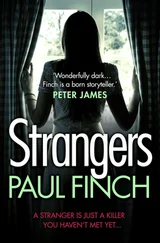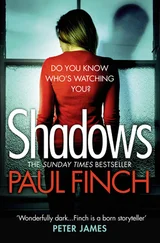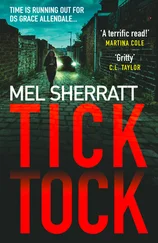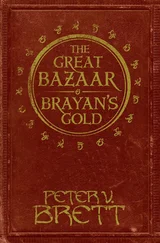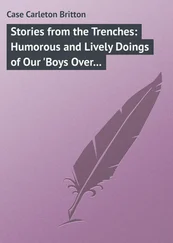Харлан Эллисон - Murder Plus - True Crime Stories From The Masters Of Detective Fiction
Здесь есть возможность читать онлайн «Харлан Эллисон - Murder Plus - True Crime Stories From The Masters Of Detective Fiction» весь текст электронной книги совершенно бесплатно (целиком полную версию без сокращений). В некоторых случаях можно слушать аудио, скачать через торрент в формате fb2 и присутствует краткое содержание. Город: New York, Год выпуска: 1992, ISBN: 1992, Издательство: Pharos Books, Жанр: Детектив, на английском языке. Описание произведения, (предисловие) а так же отзывы посетителей доступны на портале библиотеки ЛибКат.
- Название:Murder Plus: True Crime Stories From The Masters Of Detective Fiction
- Автор:
- Издательство:Pharos Books
- Жанр:
- Год:1992
- Город:New York
- ISBN:978-0-88687-662-3
- Рейтинг книги:4 / 5. Голосов: 1
-
Избранное:Добавить в избранное
- Отзывы:
-
Ваша оценка:
- 80
- 1
- 2
- 3
- 4
- 5
Murder Plus: True Crime Stories From The Masters Of Detective Fiction: краткое содержание, описание и аннотация
Предлагаем к чтению аннотацию, описание, краткое содержание или предисловие (зависит от того, что написал сам автор книги «Murder Plus: True Crime Stories From The Masters Of Detective Fiction»). Если вы не нашли необходимую информацию о книге — напишите в комментариях, мы постараемся отыскать её.
Murder Plus: True Crime Stories From The Masters Of Detective Fiction — читать онлайн бесплатно полную книгу (весь текст) целиком
Ниже представлен текст книги, разбитый по страницам. Система сохранения места последней прочитанной страницы, позволяет с удобством читать онлайн бесплатно книгу «Murder Plus: True Crime Stories From The Masters Of Detective Fiction», без необходимости каждый раз заново искать на чём Вы остановились. Поставьте закладку, и сможете в любой момент перейти на страницу, на которой закончили чтение.
Интервал:
Закладка:
As if he didn’t have enough burdens to shoulder, Lucks was being blackmailed by several parties and for several different reasons. Things were starting to turn. His fortunes were decreasing. He was still living at his $100,000 a year clip, still treating the girlies to the best, and still maintaining his exclusive apartments.
But it was the beginning of the end for Allen Lucks.
On November 25, 1955, late, late in the wee hours, the switchboard of the George V buzzed alarmingly. The operator picked up her phones and heard a girl’s frantic voice from the Lucks suite moaning that “Monsieur Lucks, ’ee eez dead!”
It wasn’t quite true, but when they raced upstairs, they found Al Lucks on the way out as the result of a stroke. He was raced to the French Clinic in Paris, and two days later he died. The medical report stated he had died from a cerebral hemorrhage — induced by overexertion.
The two girls who were found in his apartment with him were turned back onto the streets, where they quickly disappeared, with the awed stares of police following them.
Then began the crazy game of “bucks, bucks, who’s got the Lucks bucks?” The scramble was on, and in the ensuing hustle, the whole sordid story of Lucks’s influence-selling, his procuring, his shady dealings on both sides of the Iron Curtain, came out.
Where his money now reposes, how much he had cached away — all these are mysteries... just a few more mysteries surrounding a man who clothed himself for years in secrecy.
Even so, all of Al Lucks’s deals pale into insignificance at his latest, current transaction. No matter how much money he has hidden away in the bank vaults of Europe, what Al is doing now is his biggest business deal.
He’s handling the Lucks concession in Eternity, trying to buy his way into Heaven! You can lay your bets with Pete, the angel on the gate. The odds are Terrific!
Robert Faherty
To call Robert Faherty“a master of detective fiction” might be stretching things just a bit. He left behind only one novel, Swamp Babe. In 1958, Crest Books, a Fawcett imprint, published this backwoods crime adventure about “a teenage temptress wild and beautiful as the untamed swamp that spawned her.” It is enjoyable, and eminently readable, yet it would be hard to make a case that it rises above scores of other paperbacks that clamored for attention on bookstore shelves during the 1950s. Faherty’s true crime output was considerably more substantial and, for my money, more satisfying. He had a knack for spotting odd crimes with outrageous characters and bizarre motives. He knew how to plot, and he had an eye for the incongruous detail, just the right detail to capture time and place. Such is the case with the story you are about to read, one of my favorites, about a turn-of-the-century dance fan who paid the ultimate price because he was “unable to resist the lure of the fascinating rhythm of the seductive tango.”
The Dancing Beauty and the Fatal Trap
The diffused glare of the locomotive’s headlight illumined vaguely the clumps of small trees and the shadowy forms of bushes in the lowland.
Engineer Robert Rohel, guiding the Elgin, Joliet & Eastern freight train west from Chicago, saw the two straight-line gleams of the rails as he peered out from the cab. Then — one of the lines was broken. Too late to stop, the horrified engineer saw a dark object on one rail.
As Rohel set the brakes and threw over the throttle, the great wheels of the engine passed over the object. The train jolted to a stop and he rushed back.
“A woman on the tracks!” he exclaimed to his fireman as they held their lanterns over a crumpled form beside the rail. “I couldn’t save her. This is awful... the first time it’s happened to me.”
Rohel gently touched the body, turned it over. There was nothing he could do.
Stars shone in a clear sky. The lonely area was dark except for the distant glow of the train’s lamp, and, farther ahead, little points of light marking a station in the town of Wayne, Illinois. It was a warm night — September 26th.
In the morning, Coroner William A. Hopf examined the body in a morgue in West Chicago.
“Might have been an accident,” he said. “She may have fainted or fallen there and struck her head. Although it is strange that she should be walking in that lonely spot. Then,” he continued, “there’s a possibility she committed suicide. Might have picked that spot purposely.”
The coroner saw a face of considerable attractiveness, framed by rich, abundant brown hair. Though the body was broken, the facial features were virtually unmarred. The woman’s dark dress was of fine quality silk. A small gold watch, probably of little value, was pinned to the dress and intact despite the violence of the train’s impact.
“I guess there’s little I can do except write a report and hold a routine inquest,” he said. “The trainman cannot be blamed, of course.”
But Coroner Hopf was thorough. He touched the face and found the skin broken near the mouth. There seemed to be a round hole in the left cheek. He studied the head. There was a hole in the posterior skull.
“A bullet wound!” he exclaimed. “This woman was shot!”
A bullet — probably of .32 caliber — had passed through the mouth, the palate, and then gone out through the back of the head.
“I don’t believe the wound in the cheek was caused by a gun placed very near it. There’re no powder burns,” the coroner reasoned. “Most likely the gun was held a few feet away. Probably the killer expected that at the moment the train struck the body his crime would be concealed forever — and, certainly, it nearly worked out that way.”
Since it was established that the woman had been murdered, Sheriff A. A. Kuhn hurried with deputies to the railroad tracks.
There was not a trace of the gun near the scene. Determined not to overlook any clues, however, Kuhn got down on hands and knees and searched the grass. Before long he found a broken bracelet of gold. It was inscribed: “From W.H.A. to M.A.” As he was examining it closely, a deputy came running with a woman’s purse, turned inside out, which he had found thirty feet away.
“She must have been robbed,” he said. “There’s nothing in or on the purse to tell who she was.”
That question seemed to be answered a few minutes later. A white card was found in the grass. It bore a printed name, “Mildred Allison.” Kuhn turned it over. On the back, faintly penciled, was: “Felecita Club.” Another deputy found scraps of torn paper, which the sheriff held carefully and took to the office.
The scraps were pieced together and revealed the embossed name of a downtown Chicago hotel. Some fragments were missing, but the others formed words. A cryptic message!
“Dear... gang... girls... Dunham farm... money... $14... $500... you can have what you want.”
Like the other words, a signature was written in ink: “A. Harron.”
Dunham farm was near the intersection of the tracks of the Elgin, Joliet & Eastern and the Chicago, Aurora & Elgin Railroads, near the place where the train had struck the body. Kuhn hurried there with the pasted fragments of the note.
The manager’s wife said she had never seen the note and had no idea of the meaning of the message. Told about the girl on the tracks, she recalled an incident confirming the murder theory:
“After I left the Aurora & Elgin electric train at 8 o’clock last night, I noticed a man and a woman who apparently had come from Chicago on the same train. They walked near me, together, and talked in a friendly way. The woman joked about being ‘out in the country’ at night.
“Then they walked, arm-in-arm, along the Wayne road. That would have led them near the point at which the two railroads meet, close to the place where the train hit the woman.”
Читать дальшеИнтервал:
Закладка:
Похожие книги на «Murder Plus: True Crime Stories From The Masters Of Detective Fiction»
Представляем Вашему вниманию похожие книги на «Murder Plus: True Crime Stories From The Masters Of Detective Fiction» списком для выбора. Мы отобрали схожую по названию и смыслу литературу в надежде предоставить читателям больше вариантов отыскать новые, интересные, ещё непрочитанные произведения.
Обсуждение, отзывы о книге «Murder Plus: True Crime Stories From The Masters Of Detective Fiction» и просто собственные мнения читателей. Оставьте ваши комментарии, напишите, что Вы думаете о произведении, его смысле или главных героях. Укажите что конкретно понравилось, а что нет, и почему Вы так считаете.






